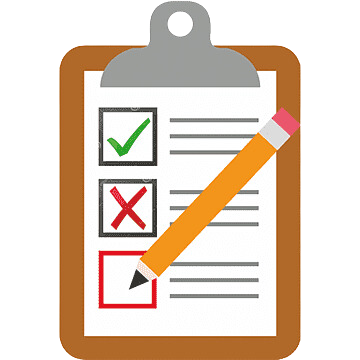Self Monitoring Behaviour
- jessicaaqian
- Nov 8, 2024
- 5 min read
Introduction
Self-monitoring involves observe, measuring and evaluating a person's behaviour. This consists of cognitive processes that aid a person to plan, focus, remember instructions and juggle multiple tasks successfully. Self-monitoring is an important part of executive functioning. As adults, we frequently use self-monitoring behaviour. We often ask ourselves questions to monitor or improve our performance - “Am I on task?” or “How much time do I have left to work on this?”.

However, young children do not have the ability to self-monitor. For example, a young toddler will typically let their mother know they want something through by crying or screaming. Self-monitoring can be particularly difficult for children with ADHD (attention-deficit/hyperactivity disorder) as these children face difficulties with their executive functioning such as keeping focused, making decisions and impulse control.
Children with ADHD experience greater challenges when trying to self-monitor compared to neurotypical children. This results in unintentional impulsive behaviour that can disrupt learning.
Although this may be frustrating for caregivers/teachers to deal with, it is important to note that self-monitoring can be learnt and takes time to develop. It is crucial to offer support to children to develop these skills. Parents/teachers can facilitate the development of these skills through helping them to practice until they are able to do so on their own.
Self-monitoring is an effective tool in improving one’s self-management skills, thus aiding one’s academic, behavioural and social development. It adopts the behavioural principle of measuring behaviour and comparing it to an external behaviour to create sustained improvement in that behaviour. In a classroom setting, this involves teaching students how to observe and record their appropriate behaviour at a particular time. This is usually used to increase desired behaviours. By meticulously monitoring their behaviour, students can use the data to change their behaviours to more appropriate ones.
Step-by- Step process to implement self-monitoring behaviour
The process below is directed towards a classroom setting. However, it can also be modified for a home setting. Self-monitoring requires the child to be an active participant in the intervention. They are given the responsibility of measuring and evaluating his/her behaviours.
1) Defining goal behaviour(s) for self- monitoring
Before you teaching the child how to monitor their behaviour, the teacher and child need to work together to identify goal behaviours that need to be improved. This teaches the child to be more independent and responsible for their actions. Which behaviors do they think are inappropriate in the classroom? Why do they engage in such behaviour?
Examples of desirable behaviours may include:
Saying positive statements to classmates
Not disrupting others during lesson time
Focusing on completing a task
For each goal behaviour, the teacher and child should come up with a clear, specific and observable definition that provides “look-fors” to indicate when the behaviour is being displayed. Role-play with the child can be done to help him/her gain clearer understanding of examples and non-examples of the behaviour.
2) Choose a method for recording self-monitoring data
There are few ways to implement self-monitoring in the classroom.
Checklist

After the child understands what the goal behaviours look like, the teacher can provide checklist which lists the goal behaviours that the student can periodically review. The child can check off those behaviours displayed during the predetermined monitoring period.
A checklist can look like this:
I have all my work materials needed for this task
My desk is organised
I understand the instructions for this assignment
The child ensures that items on the checklist are ticked before starting on the task. Checklists are useful for monitoring behaviours that require multiple steps.
Rating Scale
A rating scale consists of at least one item that a child can use to rate several behaviours. This is generally done at the end of a fixed observation period (e.g. after a class period)
An example of a rating scale would be:
“How well did I stay in my seat?
How well did I participate in class?
How well did I avoid distracting others
The scale usually has a rating format where the child can rate himself/herself as Poor, Fair, Good and Excellent for each goal behaviour.
Frequency Counts
Once the child is able to consistently monitor his/her behaviour during class, frequency counts can be used. For this strategy, the child keeps a running tally of the number of times that he/she displays a goal behaviour (e.g. number of times he/she raised their hands and waited to be called on). The child will then tally the total number of times he/she engages in the goal behaviour. Being able to see the number of times they have engaged in positive behaviours may increase a child's confidence and self-esteem.
4. Decide on a monitoring cue
The teacher can now decide on a cue to trigger the start and end of a monitoring session.
Teacher-delivered cue: The teacher delivers a cue which reminds the child to start self-monitoring. For example, at the end of an assignment in class, the teacher can prompt the class to review the assignment using a checklist before submitting their work. It may be helpful to use more teacher-delivered cues at the beginning of this strategy when students learn how to identify their own behaviours independently.
Student-delivered cue: For this cue, the child is given more independence and responsibility in initiating self-monitoring without the teachers's instructions. For example, a child can monitor his/her understanding of an assigned reading by using a rating scale a few times during the activity to determine his/her degree of understanding the text. This is done by the child himself/herself.
Beep tape and timer: A less commonly used method in Singapore would be the beep tape and timer method.
For the beep tape, the child is given an audio tape with beeps spaced at fixed intervals which matches the child’s self-monitoring schedule. For example, a child monitors his/her behaviour every 5 minutes using a self-rating scale. The teacher can use a radio that plays an audio file which beeps at 5 minute intervals.
To use a timer, the teacher or child sets a timer for a pre-set interval. When the timer rings, the child starts self-monitoring his/her behaviour. For example, if a child is working on a maths worksheet in class, he/she sets a timer with a vibration setting of 5-minute intervals. When the time is up, the child counts the number of completed problem sums during the interval.
5. (Optional) Introduce simple rewards:
Teachers may choose to reward the child when he/she consistently engage in positive behaviours to further motivate students. They can do so by praising the child upon displaying desirable behaviours or giving tangible rewards such as stickers.
To figure out what rewards are desirable to the child, teachers can observe the child's behaviour in their free time (e.g. where they like to go, activities they often engage in).
6. Conduct periodic accuracy checks
The teacher should occasionally check the child’s self-monitoring data to ensure that he/she is recording accurately. This is especially important at the start of the monitoring when the child is new to doing so. Random spot checks tend to result in higher quality self-recording data.
7. Fade the self-monitoring plan
Over time, the child is likely to achieve his/her behavioral goals. When this occurs, self-monitoring procedures should gradually fade, be simplified or be discontinued.
Fading strategies may include reducing the monitoring questions over time, changing the monitoring cue to promote independence (from teacher-delivered cues to student-delivered cues) and/or monitoring less frequently (e.g. shifting from monitoring daily to monitoring twice per week).
Written and edited by: Eulisia Er and Xavierlyn Tan | Designed by: Angela Lee








Comments